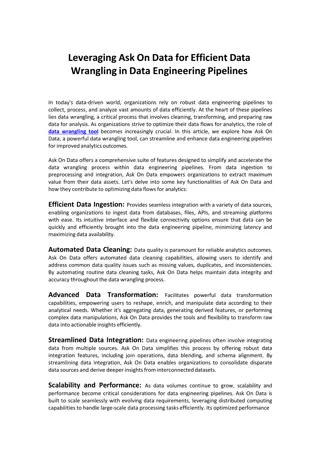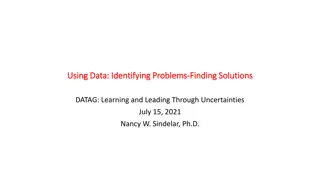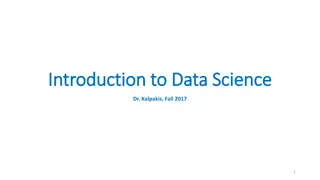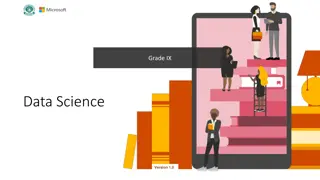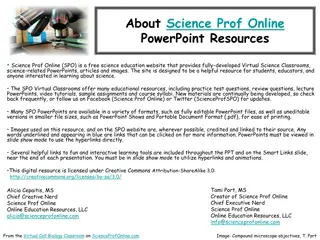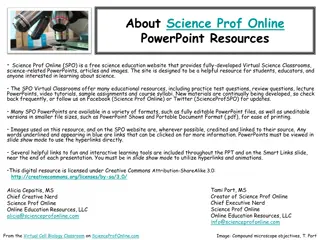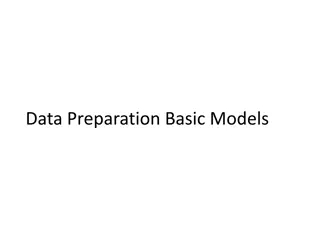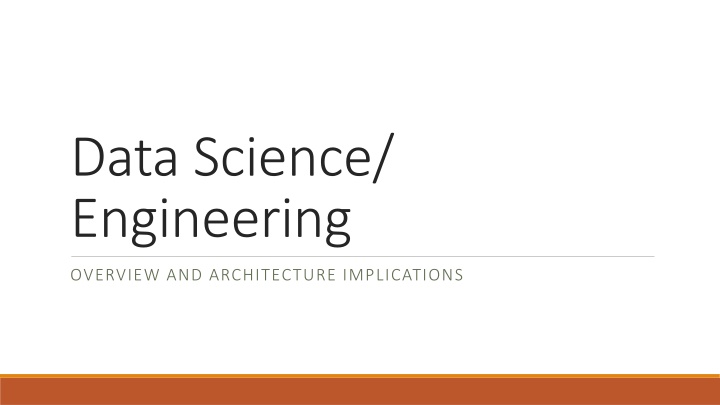
Data Science, Engineering, and Analytics in Technology Applications
Explore the importance of architecture and requirements in data science and machine learning, delve into the realm of data science projects, discover the significance of data in generating insights and competitive advantages, and learn about different types of analytics - descriptive, predictive, and prescriptive.
Download Presentation

Please find below an Image/Link to download the presentation.
The content on the website is provided AS IS for your information and personal use only. It may not be sold, licensed, or shared on other websites without obtaining consent from the author. If you encounter any issues during the download, it is possible that the publisher has removed the file from their server.
You are allowed to download the files provided on this website for personal or commercial use, subject to the condition that they are used lawfully. All files are the property of their respective owners.
The content on the website is provided AS IS for your information and personal use only. It may not be sold, licensed, or shared on other websites without obtaining consent from the author.
E N D
Presentation Transcript
Data Science/ Engineering OVERVIEW AND ARCHITECTURE IMPLICATIONS
What does Arch/ Req have to do with it? This is Architecture / Requirements what does that have to do with Data Science or Machine Learning? DS and ML are applications of software and technology Requirements and Architecture are how you go about creating applications You can t create applications without understanding their purpose Context Domain We have covered many application domains , and given the prevalence (on ongoing growth) of Data Science and ML, it is important that anyone designing or architecting software understands these topics
What is Data Science? Find order, meaning, value from (unstructured data) 2019 (indeed.com): 29% increase YOY in data science jobs Linkedin: gap in supply/ demand (150K gap) BUT: Data w/o software and applications is just data Drew Conway: Dev skills + Math/ Stats + Domain Expertise = Data Science The Data Science Venn Diagram Drew Conway
Data Science Projects It s rare (and usually unwise) to have one person do it all on anything other than a small project Multi-disciplinary team are usually pulled together Roles/ Team Data Engineer: The SME in programming ML Specialist: Deep learning and algo Researchers: Domain specific specialist (biologist, doctors, physicists) with stats skills Analysts: SME in data DB, Visualization Business/ Project lead: Data+SW+Business skills
Why do we need data? Insights Business: Competitive advantage i.e. BI (Business Intelligence) Data sources: Social network data (graphs/ connections) Images (pictures) Streaming data (video) These all provide the ability to do analysis/ provide analytics
Types of analytics Descriptive (Here is what is going on) Show plots of data. Humans can draw conclusions from the information shown Predictive (If X occurs, then Y will occur, or here is the most likely outcome given the current information) Medical Treatment expected results Investment results Recommendation engines (we think you will like this) Every single poll in politics Health predictions (if your blood pressure keeps increasing at this rate ) Prescriptive (Do X to achieve Y) As it says
Basic steps Have to: Get data 'Clean' data NOTE: 80% of project time spend on cleaning data Explore data (visualize, understand, experiment) Iterate to clean data again Model the data (can you abstract the data) Necessary to make predictions Validate the model (iterate)
The tools we use Python/ R: Modeling and data manipulation C/C++: Fast backend processing DBs: SQL Math: Probability, regression, linear algebra, calculus Which math to use to process data
AI vs. ML vs. Data Science vs Engineering AI vs ML vs Data Science ML: Learns over time; fixed algorithm Supervised Learning Specified input; Specified output (i.e. labelled data). SW figures out how to get from input to output by ingesting large amounts of data and working out the patterns to get from A to B Unsupervised Learning Massive amounts of data. SW finds pattens in the data. Self adjusting as more data is ingested AI: Learns over time; algorithm adjusts on it's own over time e.g. Neural networks Discriminative AI: Predicts outcomes or categorizes based on historical data e.g. NLP/ Sentiment analysis Generative AI: Creates new data (output) e.g. ChatGPT/ Gemini/ DALLE-2 DS: The data and SW under the hood for both Data Engineering? Building all the tools and applications that use the data for use in Data Science
Raw Data vs Smart Data ML and AI ingest data to provide smarter insights but they need to learn Training systems Large input of data; labelled System self learns based on labels E.g. "Is this a street light"? (Common captcha) Neural network starts with basic image (input) and starts comparing to labelled output or expected output Internally it develops a set of connections based on input, analysis (from internal algorithms) and expected output. And the internal algorithms keep changing over time and as more and more data comes in)
Arch impacts How to organize data Services or new code needed to cleanse and manage the data Distributed system or single system? Communications type and synchronization needs? Ability to modify algorithms easily Swap in different modules; Integrate different technologies Ways to present data Automation What type of data? Image? Text? ASCII or multi-byte Text? How much Data? What throughput is needed? Parallel or serial processing? How to select tools/ impacts on the application C/ C++/ Java/ C#/ Python Efficiency in algorithms
Data Science/ Architecture not so different DATA SCIENCE /ML ARCHITECTURE Collect data Collect requirements Explore data Review/ refine requirements Prepare data Generate options for architecture Model Model or prototype options Evaluate Evaluate






